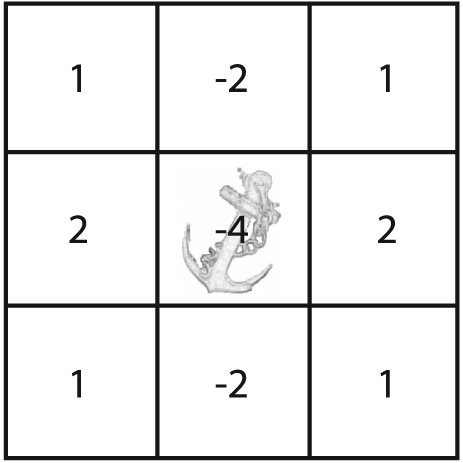Convolution
Convolution is the basis of many of the transformations that we discuss in this chapter. In the abstract, this term means something we do to every part of an image. In this sense, many of the operations we looked at in Chapter 5 can also be understood as special cases of the more general process of convolution. What a particular convolution "does" is determined by the form of the Convolution kernel being used. This kernel is essentially just a fixed size array of numerical coefficients along with an anchor point in that array, which is typically located at the center. The size of the array [62] is called the support of the kernel.
Figure 6-1 depicts a 3-by-3 convolution kernel with the anchor located at the center of the array. The value of the convolution at a particular point is computed by first placing the kernel anchor on top of a pixel on the image with the rest of the kernel overlaying the corresponding local pixels in the image. For each kernel point, we now have a value for the kernel at that point and a value for the image at the corresponding image point. We multiply these together and sum the result; this result is then placed in the resulting image at the location corresponding to the location of the anchor in the input image. This process is repeated for every point in the image by scanning the kernel over the entire image.

Figure 6-1. A 3-by-3 kernel for a ...
Get Learning OpenCV now with the O’Reilly learning platform.
O’Reilly members experience books, live events, courses curated by job role, and more from O’Reilly and nearly 200 top publishers.

